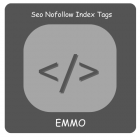Marketing vs. Advertising: What's the Difference?

Marketing vs. Advertising: What's the Difference?
Table of Contents
- Defining Marketing: A Broader Strategy
- Crafting Compelling Subject Lines and Email Content
- Key Objectives of Marketing vs. Advertising
- Tactics Used in Marketing vs. Advertising
- How Marketing and Advertising Work Together
- Costs and Budgets: Marketing vs. Advertising
- Measuring Success: Marketing Metrics vs. Advertising Metrics
Defining Marketing: A Broader Strategy
Marketing is the overarching strategy that encompasses all activities aimed at promoting and selling products or services. It’s about identifying customer needs, creating value, building relationships, and developing a long-term plan to reach and engage with target audiences. Marketing involves understanding the market landscape, conducting research, and positioning a product or service in a way that resonates with potential customers. The marketing process covers a wide range of activities, including market research, product development, branding, public relations, customer service, and digital marketing efforts like social media and content marketing. Marketing is long-term and holistic, focusing on creating a cohesive message that builds awareness, trust, and loyalty over time. At its core, marketing is about storytelling and connecting with consumers on an emotional and practical level. It’s a multi-faceted approach that considers every touchpoint a customer has with a brand, aiming to deliver value and enhance customer experience. From initial awareness to post-purchase engagement, marketing ensures that every aspect of the business is aligned with the needs and preferences of the target audience.
Crafting Compelling Subject Lines and Email Content
Advertising is just one piece of the larger marketing puzzle. While marketing covers the full customer journey, advertising focuses specifically on paid promotions aimed at driving immediate attention to a product, service, or brand. Advertising is typically short-term and more tactical in nature, designed to deliver specific messages to target audiences through channels like television, radio, print, online ads, and social media. Unlike broader marketing strategies, advertising is direct and often seeks immediate action, such as clicking on an ad, purchasing a product, or signing up for a service. It’s usually about pushing out a message to a broad audience in the hopes of capturing interest. Advertising uses persuasive techniques, creative visuals, catchy slogans, and emotional appeal to get a message across quickly. While advertising is a key tool in promoting products or services, it’s important to remember that it’s not the entire marketing plan. Advertising focuses on visibility and often provides a short-term boost in sales or brand awareness, but it needs to be supported by other marketing efforts that build lasting customer relationships.
Tip
If you offer your SEO texts in several languages or localize them for different regions, your pages may be incorrectly classified as duplicate content. However, there is a simple solution to this in the form of hreflang. Our article explains what you need to bear in mind when using hreflang.
Read more about hreflangKey Objectives of Marketing vs. Advertising
The objectives of marketing and advertising may overlap, but they have distinct goals. Marketing’s primary objective is to build and nurture long-term relationships with customers. It focuses on creating brand loyalty, driving engagement, and ensuring that a business remains relevant in the marketplace. Marketing takes a broad approach, including everything from product development to customer retention, and aims to create sustained growth over time. Advertising, on the other hand, has more immediate objectives. The main goal of advertising is to generate leads, boost sales, and increase brand awareness in a short period of time. It’s often used to announce promotions, introduce new products, or target specific audiences with tailored messages. Advertising is about capturing attention and encouraging specific actions, such as making a purchase or visiting a website. While marketing is concerned with the long-term health of the brand, advertising is more about short-term wins. However, both work together to drive overall business success by combining strategic planning with tactical execution.
Tactics Used in Marketing vs. Advertising
Marketing employs a wide range of tactics to reach customers, including content marketing, social media engagement, email campaigns, SEO (Search Engine Optimization), influencer partnerships, and public relations efforts. Marketing is more about creating value through informative, educational, or entertaining content that builds trust with the audience. It also focuses on customer experience and brand positioning, making sure that the business message is consistent across all platforms. Advertising tactics are more focused on direct promotions and paid media. These include online display ads, pay-per-click (PPC) campaigns, sponsored posts on social media, print ads, TV commercials, and influencer marketing with a specific promotional focus. Advertisements are designed to push a product or service into the spotlight, often using creative elements like imagery, video, and compelling calls to action to drive conversions. In marketing, the message evolves over time and can be refined based on customer feedback and trends. Advertising, however, is typically more fixed, with specific start and end dates, budgets, and defined metrics for success.
How Marketing and Advertising Work Together
Marketing and advertising complement each other in significant ways. Marketing sets the foundation by identifying customer needs, creating a value proposition, and building a brand’s identity. Advertising then takes that brand identity and amplifies it through paid media, getting the message in front of potential customers. For example, a marketing team may develop a long-term strategy that includes content marketing to build trust with an audience, while the advertising team creates a series of paid social media ads to generate quick conversions. Both efforts work toward the same overall goal but approach it from different angles. When executed together, marketing and advertising create a cohesive brand experience. Marketing ensures consistency in messaging and branding, while advertising pushes that message out to a broader audience, driving immediate results. This synergy is crucial for maximizing a brand’s visibility, engagement, and long-term success.
Costs and Budgets: Marketing vs. Advertising
Marketing budgets are often more spread out and focused on long-term investments. These can include costs related to content creation, market research, CRM (Customer Relationship Management) tools, SEO, social media management, and branding efforts. Marketing budgets are generally more flexible, with spending allocated across a wide range of initiatives to build a strong brand foundation. Advertising, on the other hand, requires a more concentrated budget for specific campaigns. Costs for advertising can be higher in the short term, as businesses invest in paid promotions like TV commercials, online ads, and sponsored content. The cost of advertising can vary depending on the platform, audience targeting, and duration of the campaign, but it often represents a larger immediate expenditure compared to other marketing activities. While marketing budgets are geared toward long-term growth, advertising costs are often viewed as a necessary investment for quick visibility and results. Businesses must balance their spending between both, ensuring that they allocate resources in a way that supports both short-term goals and long-term strategy.
Measuring Success: Marketing Metrics vs. Advertising Metrics
Marketing metrics are broader and often focused on long-term goals like brand awareness, customer loyalty, and overall business growth. These include measurements like customer lifetime value (CLV), customer satisfaction, website traffic, social media engagement, and lead generation. Marketers track how well their strategies are building relationships with customers and contributing to sustained business success. Advertising metrics are more immediate and focused on specific campaign results. Common advertising metrics include click-through rates (CTR), cost per acquisition (CPA), return on ad spend (ROAS), and conversion rates. These metrics provide insight into how well an ad campaign is performing in driving specific actions, such as sales or sign-ups. Both marketing and advertising metrics are essential, as they offer a comprehensive view of how a business is performing. Marketing metrics track long-term health, while advertising metrics give real-time feedback on the effectiveness of promotional efforts. Together, they provide the data needed to make informed decisions and optimize future strategies.
| Marketing vs. Advertising: Key Differences and Strategies | |
|---|---|
| Defining Marketing: A Broader Strategy | Marketing is a long-term, holistic approach focused on building relationships and creating value through research, branding, content, and customer engagement across various channels. |
| Understanding Advertising: A Component of Marketing | Advertising is a short-term, tactical promotion designed to capture attention and drive immediate action through paid media channels like TV, social media, and online ads. |
| Key Objectives of Marketing vs. Advertising | Marketing aims to build brand loyalty and long-term growth, while advertising focuses on generating leads, increasing sales, and boosting brand awareness quickly. |
| Tactics Used in Marketing vs. Advertising | Marketing includes strategies like content marketing, SEO, and social media engagement, while advertising relies on paid ads, sponsored content, and promotions to drive action. |
| How Marketing and Advertising Work Together | Marketing provides the strategy and brand identity, while advertising amplifies the message through paid campaigns, creating synergy for maximum business impact. |
| Costs and Budgets: Marketing vs. Advertising | Marketing budgets are more spread out for long-term growth, while advertising often involves higher short-term costs for immediate visibility and conversions. |
| Measuring Success: Marketing Metrics vs. Advertising Metrics | Marketing metrics focus on long-term performance like customer loyalty and engagement, while advertising metrics measure short-term outcomes like click-through rates and ROI. |
FAQs
Defining Marketing: A Broader Strategy
Marketing is a comprehensive strategy that focuses on promoting and selling products or services by building long-term relationships with customers. It involves understanding customer needs, creating value, and engaging audiences across various channels like social media, content marketing, and branding. Marketing covers a wide range of activities, including research, product development, and public relations, all aimed at delivering a cohesive message that drives awareness, trust, and loyalty.
Understanding Advertising: A Component of Marketing
Advertising is a specific, tactical part of the broader marketing strategy. It focuses on paid promotions to generate quick attention and drive immediate action, using channels like TV, social media, and online ads. Advertising usually delivers targeted messages to reach a larger audience and prompt a direct response, such as making a purchase or visiting a website. It’s short-term and goal-oriented but essential for amplifying the brand's visibility.
Key Objectives of Marketing vs. Advertising
Marketing focuses on long-term goals like building customer loyalty, engagement, and growth, while advertising aims to achieve short-term wins like boosting sales or increasing brand awareness. Marketing works on creating sustained business success, while advertising is about capturing attention quickly and driving specific actions within a set period.
Tactics Used in Marketing vs. Advertising
Marketing uses a variety of tactics such as SEO, content marketing, social media engagement, and email campaigns to nurture relationships with the audience. Advertising relies on paid media tactics like online ads, PPC campaigns, and TV commercials to promote products or services to a broad audience and encourage immediate conversions.
How Marketing and Advertising Work Together
Marketing provides the strategy and groundwork, identifying customer needs and developing a brand identity. Advertising takes this identity and amplifies it through paid channels, getting the message in front of the target audience. Together, they create a consistent brand experience, combining long-term growth with immediate visibility.
Costs and Budgets: Marketing vs. Advertising
Marketing budgets are typically spread over long-term initiatives like content creation, research, and SEO, while advertising requires a higher immediate cost for short-term campaigns like online ads and sponsored content. Marketing invests in building a solid foundation, whereas advertising focuses on achieving quick results.
Measuring Success: Marketing Metrics vs. Advertising Metrics
Marketing metrics focus on long-term growth and include measurements like customer satisfaction, brand awareness, and engagement. Advertising metrics are more immediate, tracking specific campaign performance such as click-through rates, conversion rates, and return on ad spend. Both sets of metrics are essential for understanding the overall success of a business strategy.










